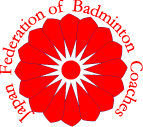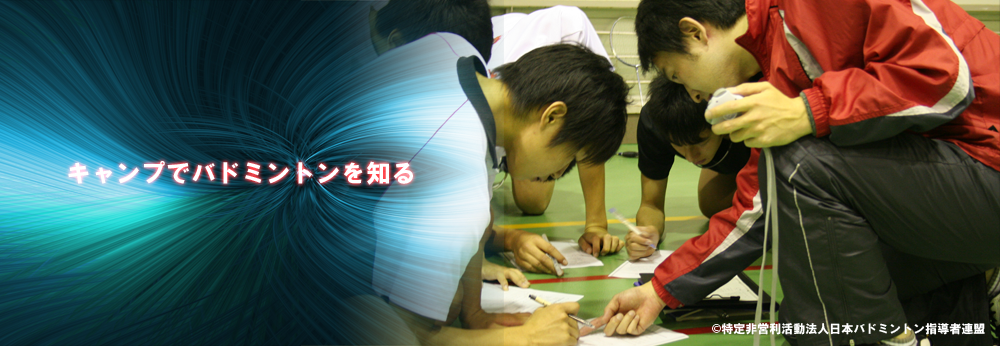ホーム › フォーラム › バドミントン・コミュニティー › Kazalinsk
このトピックには0件の返信が含まれ、1人の投稿者がいます。3 年、 10 ヶ月前に chastityservice さんが最後の更新を行いました。
-
投稿者投稿
-
chastityservice<br><br>Kazalinsk (kaz. Kazaly) is a city in the Kazalinsky district of the Kyzylorda region of Kazakhstan. The administrative center and the only settlement of the administration. CATO code – 434423100.<br><br>The city is located on the right bank of the Syrdarya River. Railroad station Kazalinsk (code 670507) on the Orenburg – Tashkent railway (Kandyagash – Arys section), founded in 1903, is located 12 km north of the city, on the territory of the regional center – the urban-type settlement Aiteke-Bi (former. Novokazalinsk). Adjective Kazalinskiy applies to this locality as well.<br><br>Before the degradation of the Aral Sea and the Syrdarya delta in the second half of the 20th century, the main occupation of the inhabitants was fishing and fish processing. There was a fish and brick factories, which are currently closed.<br><br>The city is officially included in the Aral zone of ecological disaster.<br>Story<br> Coat of arms of Kazalinsk sample 1909<br><br>The Russian in the Kazaly tract was founded in 1853 at the direction of V.A.Perovsky and was officially called Syr-Darya Fort No. 1… The fort was built to replace the abolished Aral fortification.<br><br>In 1867, the settlement was given city status and name Kazalinsk… In the same year, the Syrdarya region of the Russian Empire was created, the city became the administrative center of the Kazaly district of this region.<br><br>By the end of the 19th century, the population of the city was about 6 thousand inhabitants. The composition of the population was heterogeneous: Russians, including Cossacks and exiled Urals, Tatars, Kazakhs, Khivans, Central Asian Jews.<br><br>Description of the coat of arms of the city, model 1909:<br><br> In a black shield on a golden ground, a natural loaded camel, accompanied at the top by a golden trident. In the free part, the emblem of the Syr-Darya region. The shield is surrounded by golden grape branches tied with an Alexander ribbon and topped with a silver walled crown.<br><br>During the Great Patriotic War, a German landing (sabotage and reconnaissance group) was thrown out on the territory of the Kazaly region. This fact was used in the plot of the feature film “The Panther’s Triple Jump”, filmed by the Kazakhfilm film studio in 1984-1985.<br><br>The maximum level of economic and social development of Kazalinsk and the region was reached in the 1970s, before the sharp decline in the level of the Aral Sea.<br><br>The city has one of the oldest weather stations in Central Asia – it has been operating since 1848.<br>Population<br>The majority of the inhabitants of the city are Kazakhs. Also, dozens of families of Russian Old Believers live. Residents leave the city in search of work, leaving for Baikonur, Kyzylorda, other cities of Kazakhstan and Russia.<br><br>At the beginning of 2019, the population of the city was 5777 people (3053 men and 2724 women).<br>Kazaly „Urals”<br>Kazalinsk was known as one of the of the Aral “Urals” (self-name), also known as “Udtsy” and “Aralians”. These are the descendants of the Ural Cossacks, exiled in 1875-79 for disobeying the 1874 “Regulations on military service of the Ural Army”.<br><br>At the beginning of the 20th century, about 1,500 Ural residents lived in Kazalinsk. They were mainly engaged in fishing and hunting. In everyday life, they distanced themselves from the Russians – adherents of the official Orthodox Church.<br><br>At present, of the older and middle generations retain the Old Believer rituals, while young people identify themselves as „Russians.” In the 1990s, a Russian school was closed in Kazalinsk due to a lack of students.<br>Geography<br>The Aiteke-Bi-Birlik road passes through the city. The Aralsk-Zhosaly-Kyzylorda highway runs 15 km north of the city; it has the number M-32 (Samara-Shymkent).<br><br>The city of Kazalinsk has a quarterly development. Houses are mostly one-story, made of adobe bricks or adobe. In the city center, two-storey office buildings made of baked bricks. The main streets, 20-30 m wide, have asphalt or gravel pavement, others 10-20 m wide without pavement. Kazalinsk is fenced in from the south by an earthen dam in order to protect it from flooding during the flood of the Syr Darya.<br>Nature<br>The territory is a flat plain crossed from east to west by the Syr Darya River, flowing 1 km south of the city. The absolute marks of the relief are 55–65 m. The Syrdarya floodplain is wide (up to 30–50 m), swampy in places, there are a large number of channels, lakes and a dense irrigation network.<br><br>The Syr Darya is 50–150 m wide, 0.7–3 m deep, the current velocity is 0.8 m / s, the bottom is sandy and viscous. The river bed is meandering, with a large number of islands and channels. The banks are steep and steep, the height of the cliffs is 2–6 m. The water in the river and its channels is fresh, muddy, suitable for drinking after thorough cleaning. The highest water level in the river is from April to August. In late June-early July, the water rises above the average level up to 3 m. In early December, the Syr Darya and all existing reservoirs freeze, open up at the end of March; the thickness of the ice in severe winters reaches 1.1 m.In some places, small vessels with a draft of up to 1.2 m sail along the Syr Darya<br><br>In the floodplain of the Syr Darya and on the islands, thickets of thorny bushes – tugai are widespread. Among the tugai stand separate trees of willow, dzhida (loha), poplars. On the lakes and in some places along the banks of the river, reeds grow 3–4 m high, often forming impassable thickets. Vegetables and rice are grown on irrigated land.<br><br>In the rest of the territory, desert and semi-desert vegetation is represented by rare shrubs (tamarisk, juzgun) up to 2 m high, semi-shrubs (boyalych, biyurgun, kokpek, wormwood) 0.5 m high and grasses (fescue, feather grass, camel thorn). The grass cover burns out by the beginning of June.<br><br>The city is planted with willows, elm and poplars; there are fruit orchards in the private sector.<br>Climate<br>The climate is sharply continental, arid, with large fluctuations in seasonal and daily air temperatures, low precipitation (about 130 mm per year).<br><br>Winter (mid-November – mid-March) with variable clouds and frequent fogs. Average air temperature during the day is -5 … -10 ° C, at night up to -20 … -25 ° C (minimum -38 ° C). Persistent frosts begin in December. Thaws are possible in any month of winter. Precipitation falls mainly in the form of snow. Snow cover forms in the second half of December and lasts until the end of March; its thickness usually does not exceed 10 cm (in snowy winters it reaches 40 cm). The average depth of soil freezing is 1.3 m.<br><br>Spring (mid-March – April) is warm with unstable weather in the first half. Air temperature at the beginning of the season in the daytime -1 … -10 ° C, at night up to -10 ° C; at the end of the season during the day up to 25 ° C, at night from -1 ° C to 8 ° C. Precipitation falls in the form of intermittent rains, sometimes with snow.<br><br>Summer (May – mid-September) is characterized by stable hot dry and little cloudy weather. The air temperature during the day is 30 … 35 ° C (maximum 45 ° C), at night the temperature drops to 15 … 18 ° C.<br><br>Autumn (mid-September – mid-November) is dry and warm in the first half, cloudy and cool in the second. The air temperature is 5 … 25 ° C during the day, -5 … 5 ° C at night. Precipitation falls in the form of drizzling rains, sleet falls in the second half of November.<br><br>Winds in the spring and summer are western and north-western, in autumn and winter, eastern and northeastern. The prevailing wind speed is 3–7 m / s. Throughout the year (especially in winter and spring), sometimes strong storm winds are observed at a speed of 15 m / s or more (25 days per year).<br><br>The average number of days with weather phenomena per year: precipitation – 58 (January – 9, June – 2), fog – 25, blizzard – 12, thunderstorm – 8. The number of clear days in terms of total cloudiness – 119, overcast days in terms of lower clouds – 17.<br>sights<br> Gani-bai mosque<br><br>The historical part of Kazalinsk is an urban development complex of the late XIX – early XX centuries, which is an architectural monument of national importance. Protected are the Ganibay’s house (XIX century), the building of the G. Muratbayev memorial museum (late XIX – early XX centuries), the building of the city library (the former Ganibay mosque, XIX century), the Nogay mosque (Nuraly mosque, XIX century), the building of the regional house of culture named after … R. Baglanova (former church, 1904).<br><br>In 17 km south-west of Kazalinsk, near the village of Urkendeu, there is a settlement of Zhankent (Yangikent) (V-XV centuries).<br>Notable nativesRoza Tazhibaevna Baglanova (1922-2011) – Kazakh Soviet singer, People’s Artist of the USSR (1967).Marina Ivanovna Volnova (born 1989) – Honored Master of Sports of Kazakhstan in boxing, bronze medalist of the 2012 Olympics in London.Alexander Ilyich Dutov (1879-1921) – Cossack general, participant in the Russian-Japanese, World War I and the Civil War.Madina Esmalaevna Eralieva (1954-2000) – singer, Honored Artist of Kazakhstan.Krymbek Eleuovich Kusherbayev (born 1955) – statesman of the Republic of Kazakhstan, akim of the West Kazakhstan region, akim of the Mangistau region, advisor to the President of the Republic of Kazakhstan, vice-premier of the Republic of Kazakhstan, since January 17, 2013 – akim of the Kyzylorda region, doctor of political sciences.Mikhail Nikolaevich Lutsenko (1909-1994) – Soviet statesman and party leader, 1st secretary of the Akmola regional committee of the Communist Party (Bolsheviks) of Kazakhstan, Minister of Agriculture of the Byelorussian SSR.Gani Muratbayev (1902-1925) – Secretary of the Central Committee of the Komsomol of Turkestan, head of the department of the executive committee of the Communist Youth International for work among the youth of the Eastern countriesVladimir Pencherovich Tsoi (1938-2015) – Soviet and Russian artist, Honored Artist of the Russian Federation (2010).Pavel Abramovich Chirov (1938-2006) – Soviet and Russian scientist in the field of entomology, parasitology, epizootology and microbiology, doctor of biological sciences.
-
投稿者投稿






